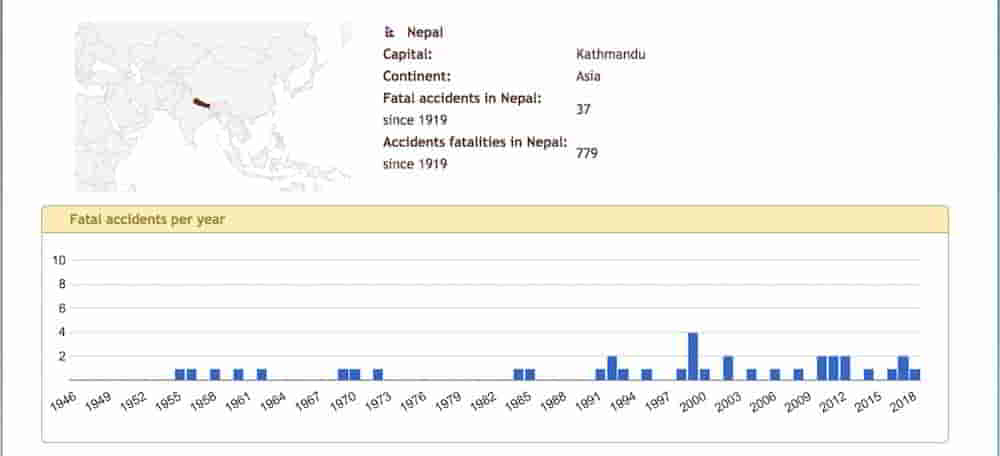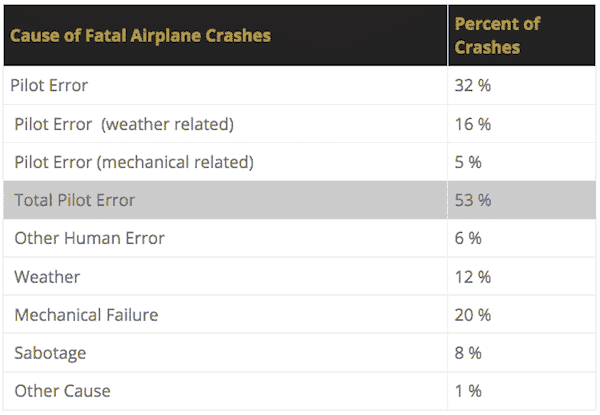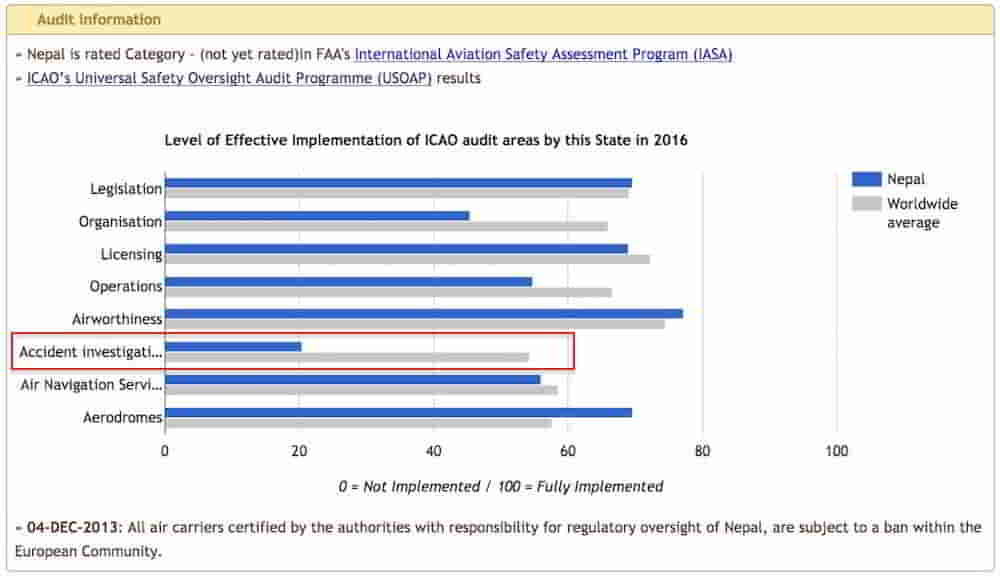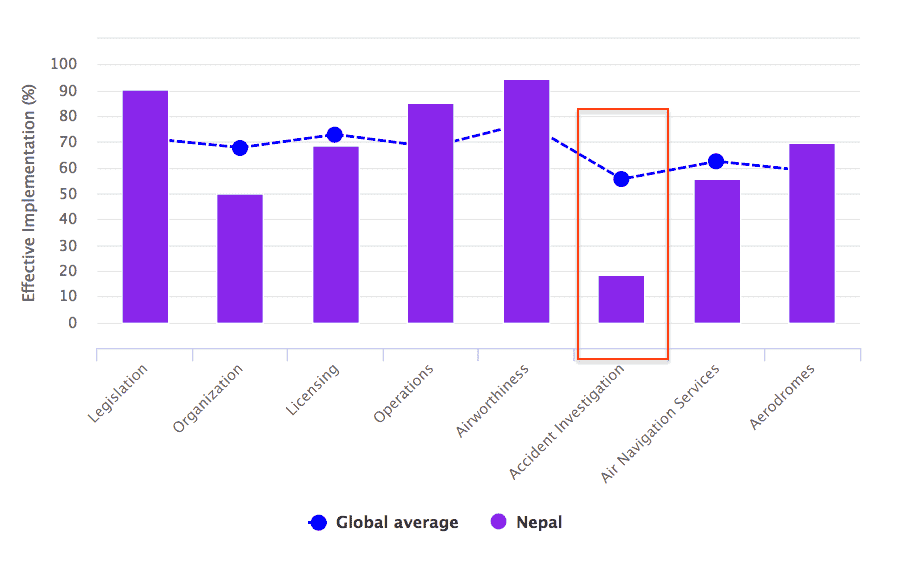This is a rant…a long rant!
So, at a press conference on March 13, the authorities promised an investigation into the recent US-Bangla airplane crash which has now claimed 51 lives (RIP).
I have two questions:
- Will those entrusted with the investigation be given access to all and every bit of information pertinent to the investigation instead of just those that corroborate the narrative the authorities will want to make public?
- Will the investigators have the moral, ethical, and intellectual integrity to conduct an impartial and thorough investigation into the crash AND make public ALL their findings?
I ask those questions for a number of reasons.
From 1990 to 2018, we have had a total of 48 accidents and incidents, 27 fatal (i.e. 1 fatal/yr on average).

Until 2007, 95% of the crashes had been attributed to “human error” (i.e. the pilot). What of those since then? The rate at which the pilot is blamed appears to still be high. This August 2016 article, citing a senior official at the Ministry of Culture, Tourism and Civil Aviation (MoCTCA), says, “more than 80 percent of plane crashes cite ‘human error’ as the major cause.”
The world average is 53%.

People I have had discussions with about aviation accidents as well as write-ups on them also blame the terrain for our dismal aviation safety record, in addition to pilot error! I am aware of the fact that our terrain posses challenges that most others don’t.
But, if indeed the pilot and terrain are to blame for most of our fatal accidents and/or incidents and the laxed attitude towards regulation have nothing to do with them, just a number of questions/observations:
- How is it then that European Union banned Nepali airlines from flying into their territories?
- How is it then that the Civil Aviation Authority of Nepal has felt the need to upgrade Kathmandu airport since 2011 even forbidding large jets, like the Airbus A330 and Boeing 777, from landing at the airport, but does not appear to have done much about it as yet?
- How was it then that after the Air Kasthamandap (single-engine plane) crash-landed in Kalikot killing two in February 2016, the government went back to re-enforcing the policy of not allowing single-engine planes to shuttle passengers? (The second article is in Nepali.)
- How was it then that the International Civil Aviation Organization (ICAO)’s audit reports for 2016 and 2017 (see images below) show Nepal’s level of Effective Implementation of ICAO’s Accident Investigation related Standards and Recommended Practices, associated procedures, guidance material, and best safety practices to be at just 20.41% and 18.28% respectively, way below the world average AND considerably lower than of every other area? (Just between 2010 and 2015, there were a total of 14 incidents and accidents, 34% of all incidents and accidents between 1990 and 2015!)


- How is it then that Aviation Safety Network reported, on September 2017, that Nepal [was] working on independent aircraft accident investigation body and yet, just a few days ago, the Council of Minister had to form an ad hoc six-member probe commission to investigate the March 12 US-Bangla plane crash?
- How is it that a survey in 2015 found half of the world’s most unsafe airlines in Nepal and in the 2018 ranking four of the seven least safe airlines are Nepali?
- How is it that Nepal’s regulator, in January 2018, still “does not understand the concept of zero accidents”?
- How is it that something like that which a Facebook user described happened to her flight to Delhi, India, from Kathmandu airport did happen?
Anyway, if the investigation into the recent US-Bangla crash is NOT carried out thoroughly and impartially and all the findings not made public, we will just get the same drivel we have gotten all these years.
Attributing most fatal airline crashes to “human error” and washing ones hands off it, to me, is a cop-out. If there is a “human error” here it’s that very tendency to blame the pilot, who is NOT there to speak for/defend himself!
Scant regard for human life is the real reason for the incredibly high rate of fatal, and other, accidents to begin with AND for such findings of most investigations into fatal crashes in the country!
This is the case not only with how the aviation industry is managed and regulated, and aviation accidents investigated and treated, but also with how our mostly morally bankrupt political leaders, bureaucrats, private companies etc. flout pretty much every policy and system for short-term, personal monetary gains.
Rant over! Where is my beer?
Someone get me a beer!
What do you think?
NB: A much shorter version of the blog first appeared as a Facebook post on March 14, hence the kind of words the post begins and ends with.
* * * * * * * *
April 24 Update
This article in The Nepali Times, published on March 12, includes audio of the exchange between the pilot and the air traffic controller. This article in The Kathmandu Post, published on March 13, discusses the how the accidents unfolded using parts of the exchange.
This March 19 article in The Daily Star alleges,
“[t]he recent US-Bangla plane crash has suddenly brought out some bone-chilling allegations from a number of pilots of compromising flight safety by [Bangladeshi] private airlines.”
This March 21 article in The Himalayan Times points out why the probe into the crash is “snail-paced.” The opening starts thus:
“A government commission formed to investigate into the recent US-Bangla plane crash has wilfully wasted over a week after the mysterious crash, demonstrating an utter lack of seriousness and confidence.”
And the reason for the lack of confidence in the probe body?
“Another expert shared that the commission chaired by a former director general at the Civil Aviation Authority of Nepal, with a ministry of civil aviation joint secretary, who also sits on the CAAN Board as member secretary, and technical experts chosen from a pool of aviation personnel under the regulatory oversight of the aviation regulator, does little to inspire confidence in this particular investigation that will have international ramifications. The findings of the probe will be contested by Bangladeshis and may be Chinese counterparts, too.”
Just about two weeks ago, the commission released its preliminary report. According this April 18 article in The Himalayan Times, the commission,
“by keeping under wraps immediately available factual information on the flight crew and the air traffic controller, especially their aviation qualifications, has deliberately chosen to maintain suspense till the release of the final report.”
Two article published on April 22 and April 23, both in The Daily Star, are also about the shortcomings of the preliminary report.
April 29 update
Just came across this article published in MyRepublica (on Aprl 23), about US-Bangla Airlines raising questions about the recently-published preliminary report by the commission.
Issues with the ONLY international airport in the country, have been recognized as far back as 2011! According that article, published in March 2017, a little over a year ago, “Tribhuvan International Airport (TIA) is at the final stage of awarding a $28-million contract for the rehabilitation of its battered runway.” It further says. quoting Murari Bhandari, chief of the runway rehabilitation project, “on-ground work will begin after the monsoons in 2018.”
An article, published yesterday in The Kathmandu Post, headlined thus: Runway extension plan goes haywire after contractor flees. So I guess, the airport will not be seeing any work following this monsoon after all!
August 4 Update
The Himalayan Times reports Runway cracks cause hazard at TIA; four flights delayed. “Murari Bhandari, a civil engineer at TIA admitted that repairing and maintenance of the runway was not a permanent solution to the problem. He said that the runway at the airport has been causing hazards since 2013, the time when TIA expanded its services to a considerable number of domestic and international flights.”
August 6 Update
The Kathmandu Post reports $28m TIA runway rehab project stirs back to life “after lying in limbo for months.” “Rehabilitation work on the 3,050-metre aged runway pavement at the airport is expected to begin by the second week of February next year and be completed by July.” […] “Cracks first appeared on the runway in June 2011, and they have become a recurrent problem. Cracks were reported occasionally in 2012. However, the problem worsened in 2013, forcing Caan to take a harsh decision to bar aircraft weighing more than 196 tonnes from landing at TIA for a month.”
August 28 Update
Even though the probe commission formed back in March to investigate the crash and tasked with providing their “report at the earliest,” only a preliminary report has been released. When the final report will be made available to the public is anyone’s guess.
This article, however, an exclusive published yesterday in The Kathmandu Post, based on a copy of the official investigation into the crash, basically says that the report puts the blame squarely on the pilot. After all, as The Himalayan Times pointed out in it’s March 21 article, and highlighted earlier in this blog post, when there’s obviously a conflict of interest among members of the commission, what can you expect?! Definitely not a thorough and impartial investigation!
The government of Nepal, unhappy with the publication of the article in The Kathmandu Post, made press release to that effect.
Update: Nepali government officials, unhappy with Kathmandu Post’s journalism, attack our story by calling it “unethical and fraudulent.”
We verified the document with senior authorities and stand by our decision to publish details in the report. pic.twitter.com/LlrQ4U8dyd
— Anup Kaphle (@AnupKaphle) August 27, 2018
